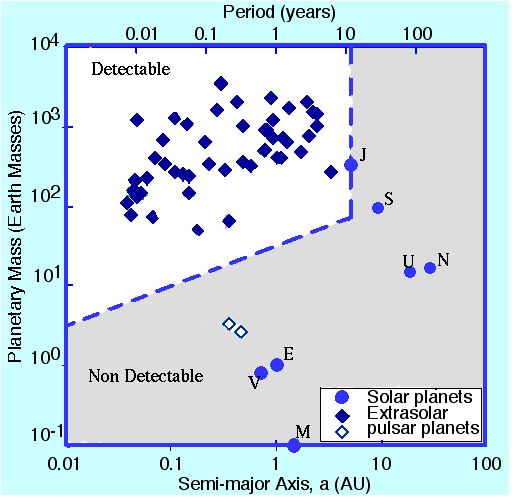Are Extra-solar Planets common??
Statistically speaking, have we shown that extra-solar planets are common? Consider this: if we were looking at our Sun from typical stellar distances, we would NOT have detected any of our planets yet! Only Jupiter might be seen.

Nearly all the planets so far detected are rather unusual. They are highly massive (introduce a large Doppler shift) and are very close (have a short period) to their host star. This is a selection effect. These are the easiest planets to detect and the only ones our observing techniques are capable of detecting at this time.
Your book states 3-6% of stars examined thus far show planets. Until we begin detecting planets of `typical' size and distance (consistent with our solar system), we have only scraped the surface of what is out there to find. It is possible that a majority of stars will have some kind of planetary system.